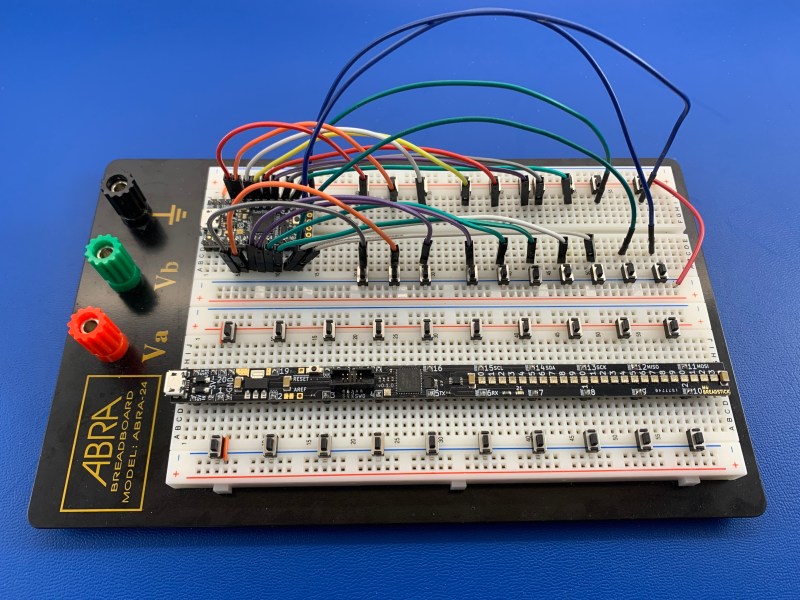
What does “breadboard-friendly” mean to you? It’s become a game of minimum viability. Sure, it fits in the breadboard, but are there any accessible tie points left for wires and components? What good is a development board if you can’t easily prototype with it?
A few years ago, [Michael Rangen] set out to change all of that by creating a long and skinny development board that spaces out the I/O pins and simplifies wiring, making every circuit beautiful and easier to take in visually. The current version is an adaptation of Adafruit’s ItsyBitsy M4 Express. It has 20 I/O pins, all spread out along the length and numbered around the horn like an IC. [Michael] dipped this breadstick in 24 tiny RGB LEDs, all of which are on a dedicated com bus.
We think this is a great idea that will definitely make microcontrollers more hackable. This type of layout would make checking students’ work a breeze, and you can make tidy prototypes with it yourself after class. Today the board runs CircuitPython, and it will be able to run Arduino in the future.


0 Commentaires